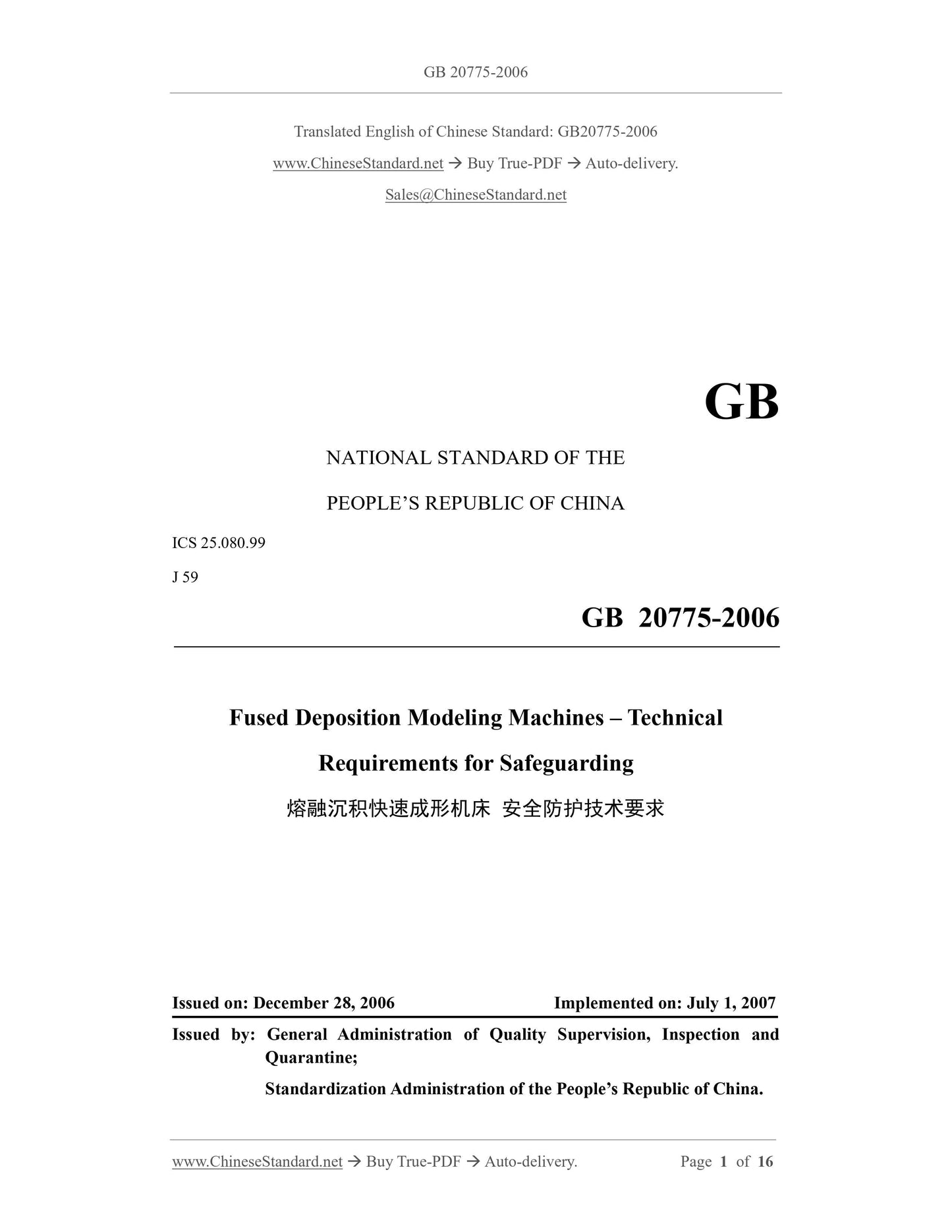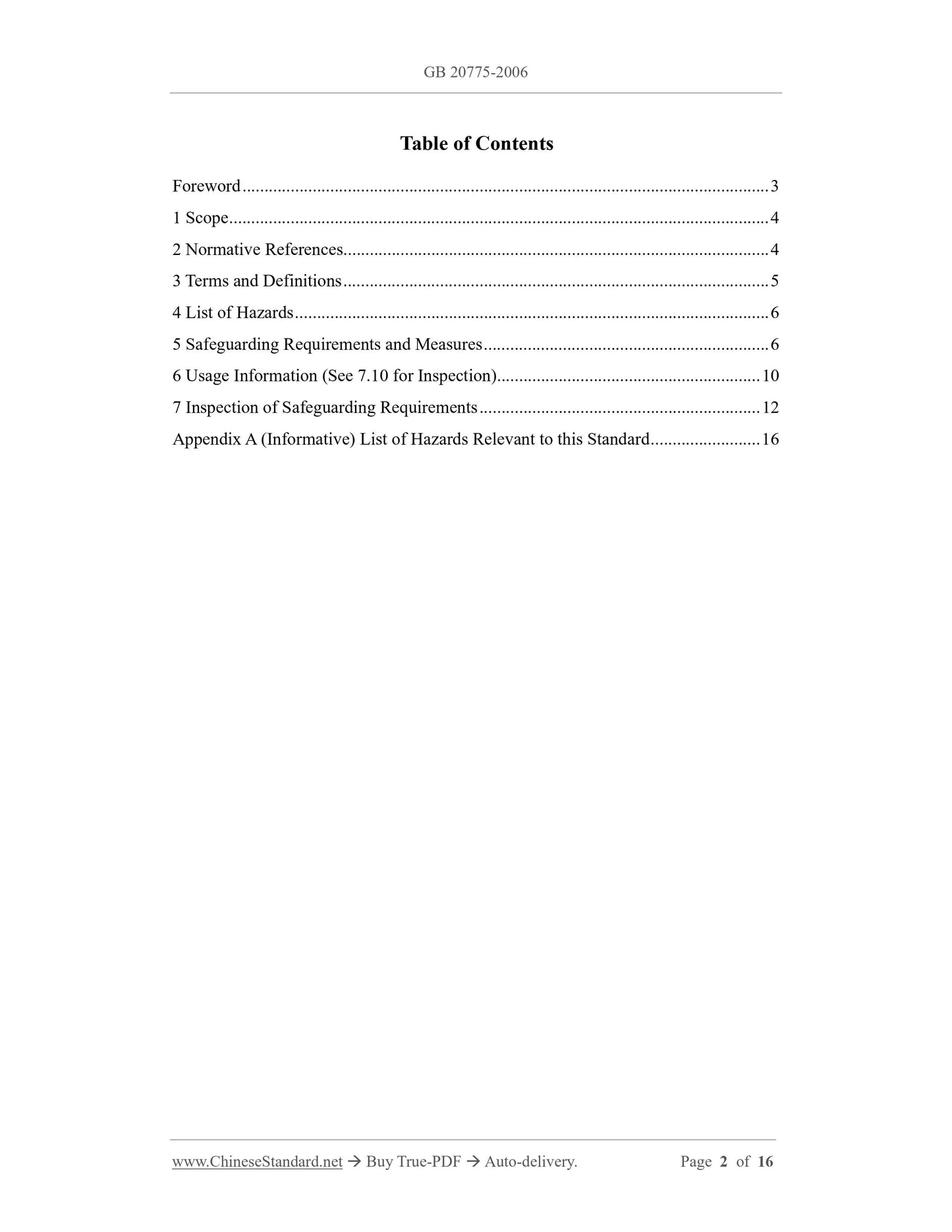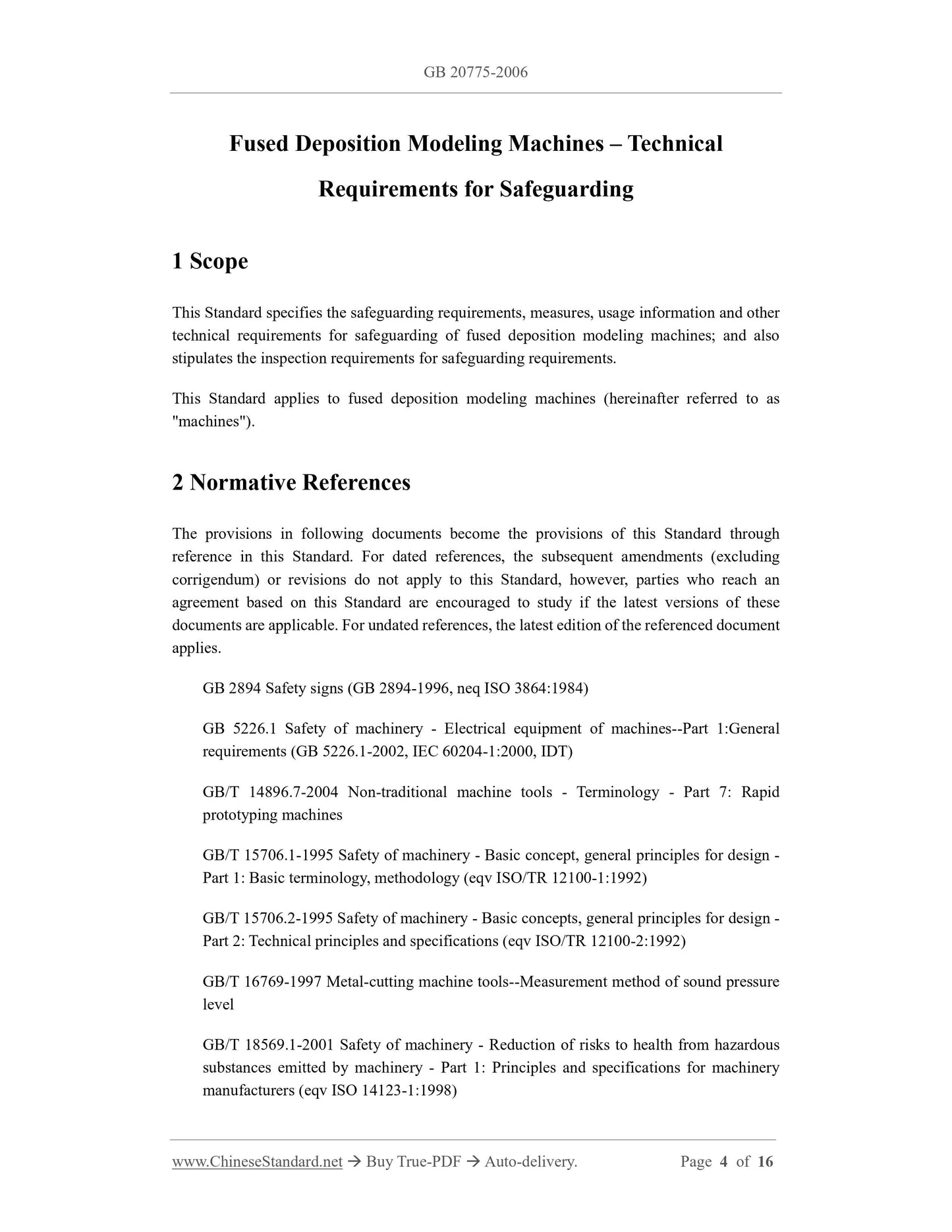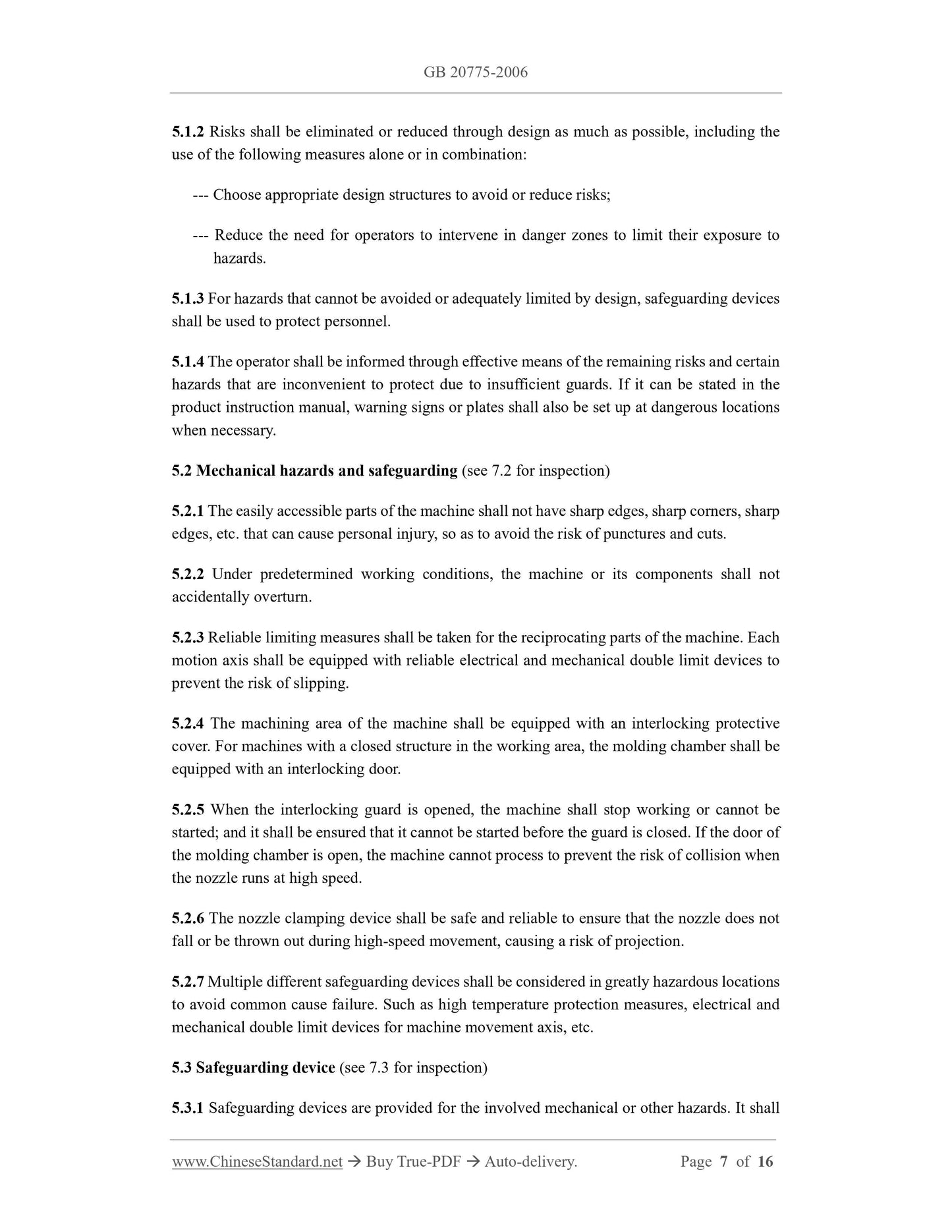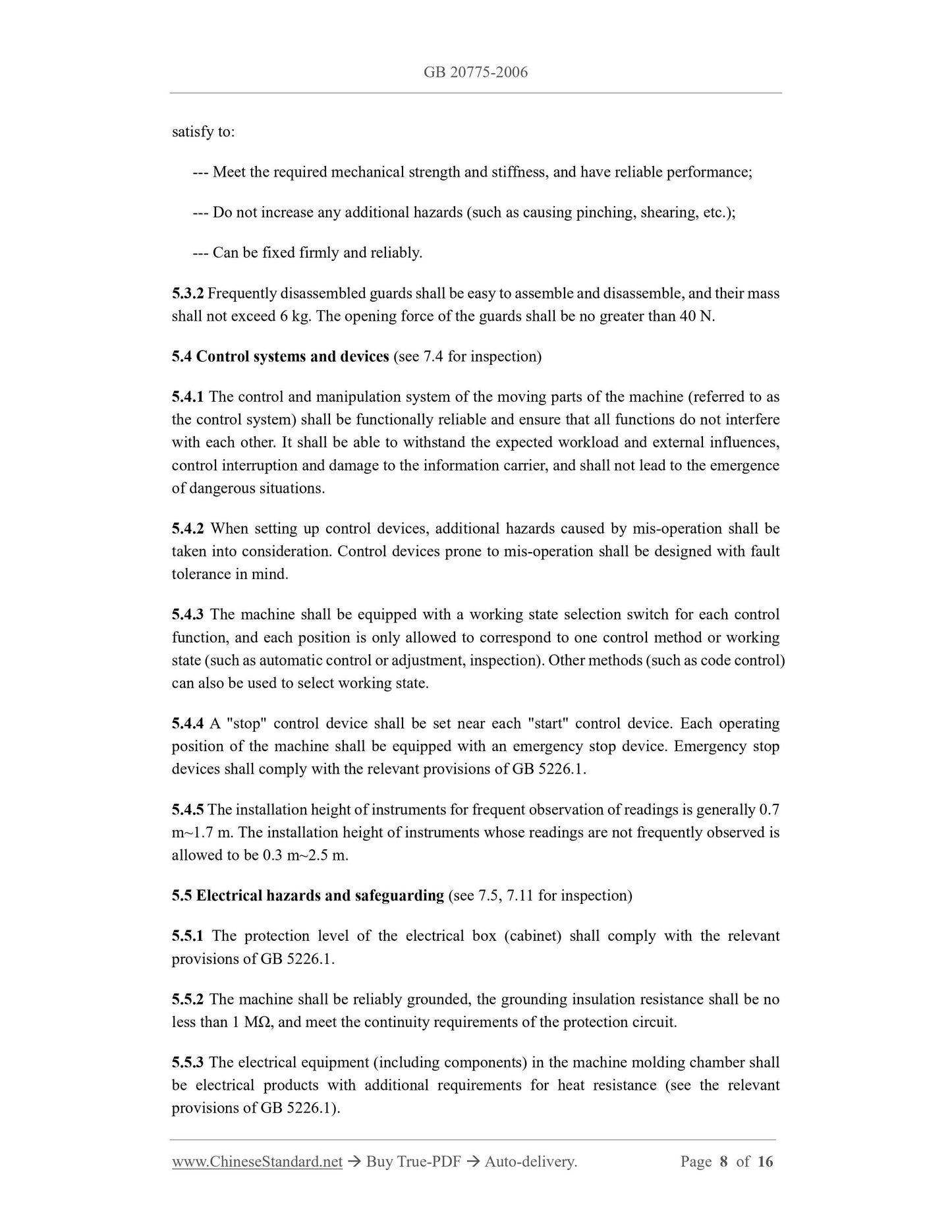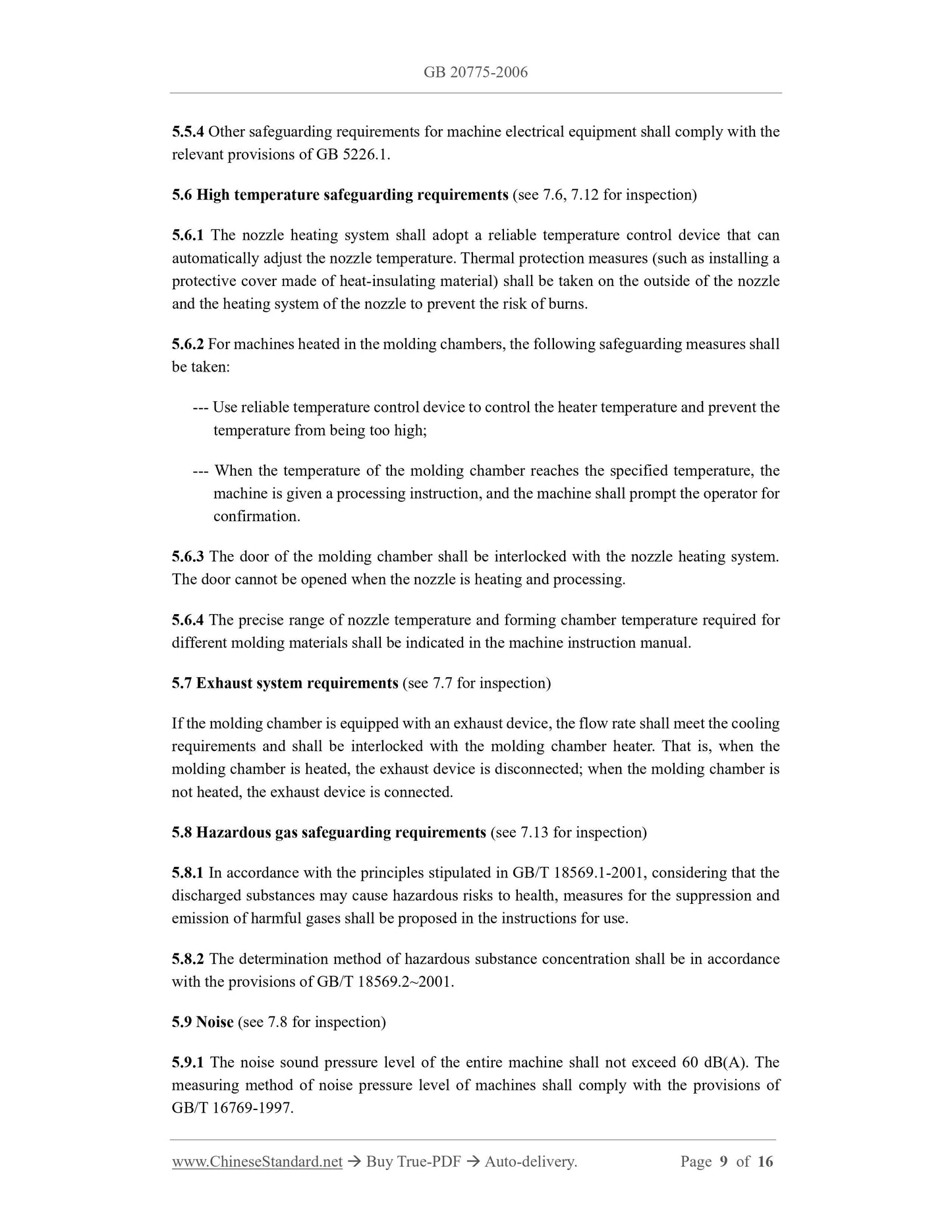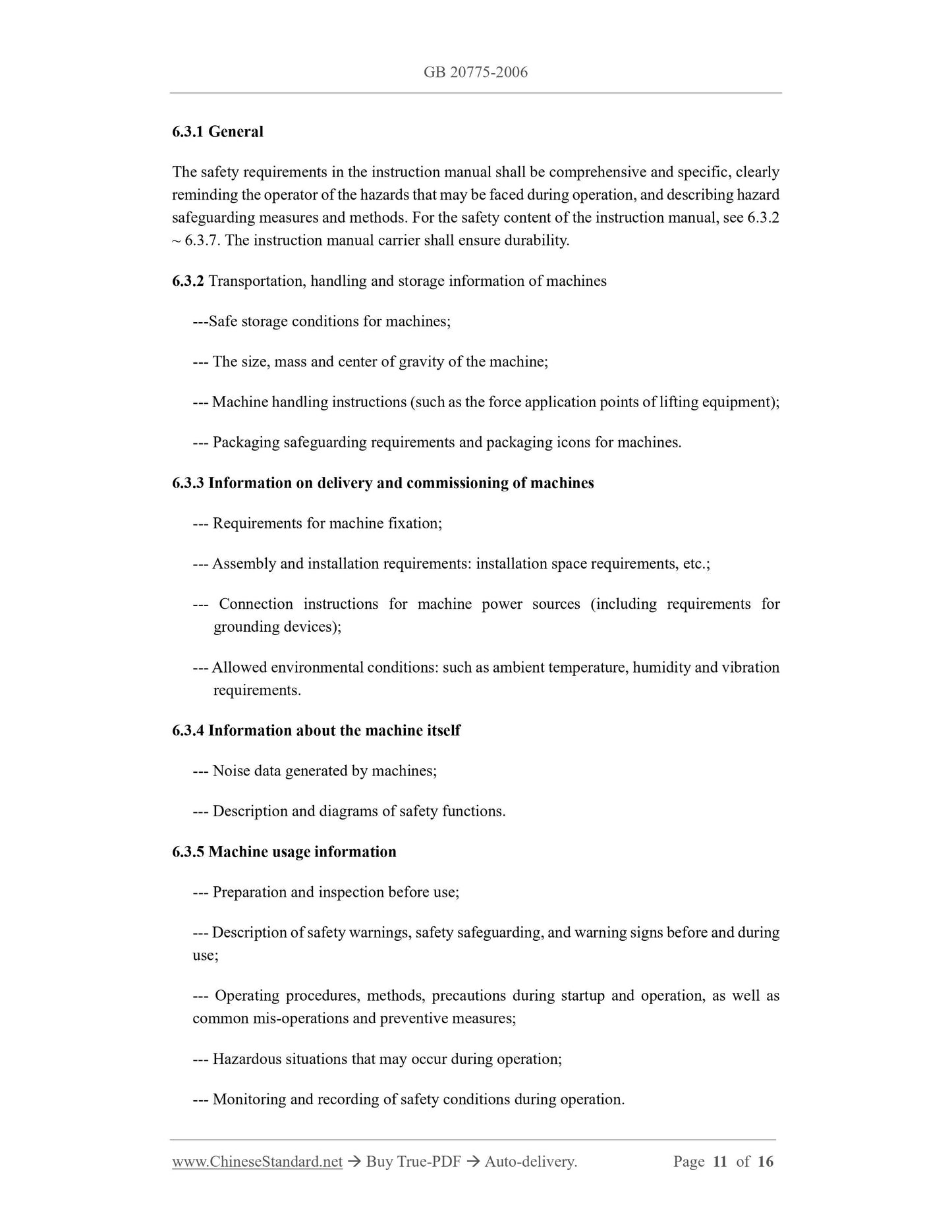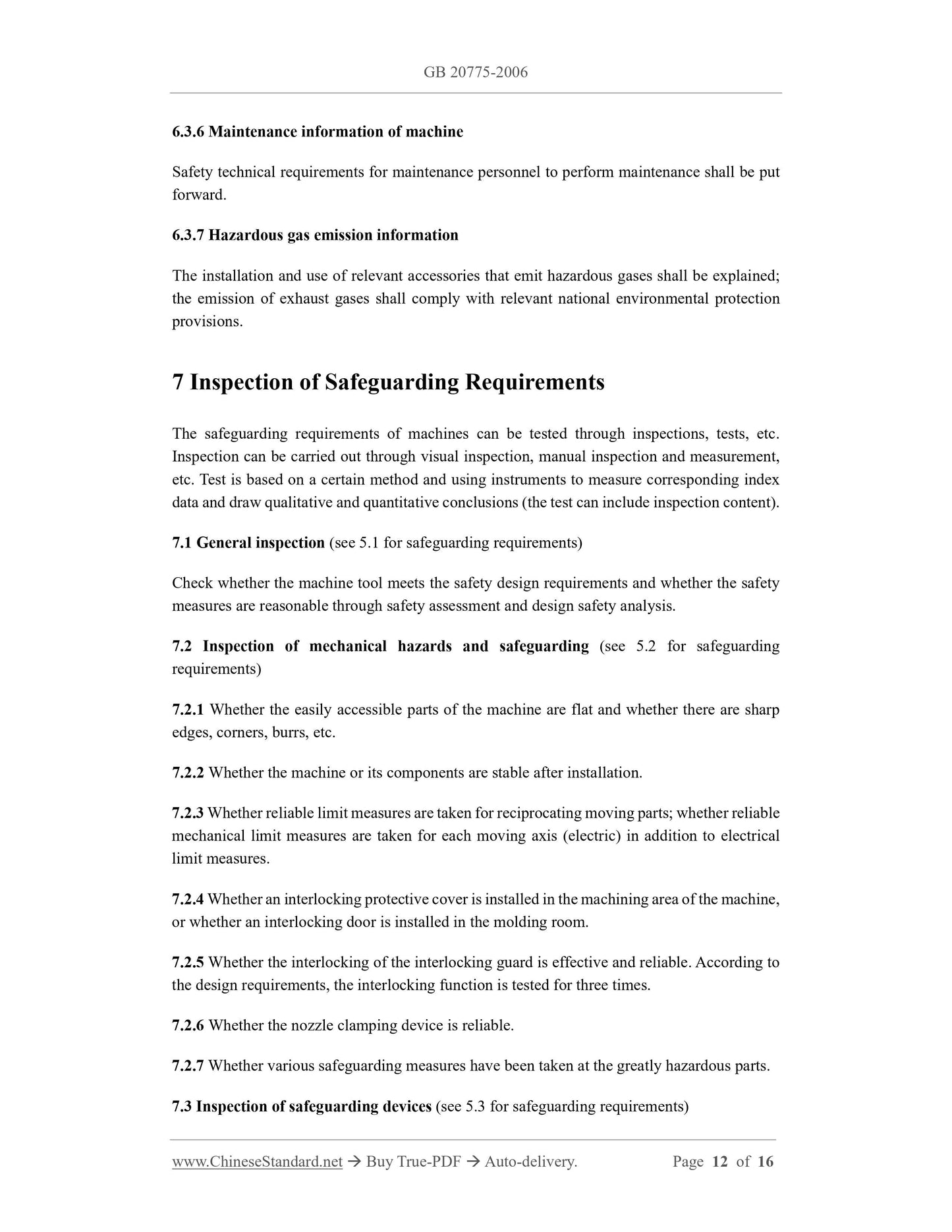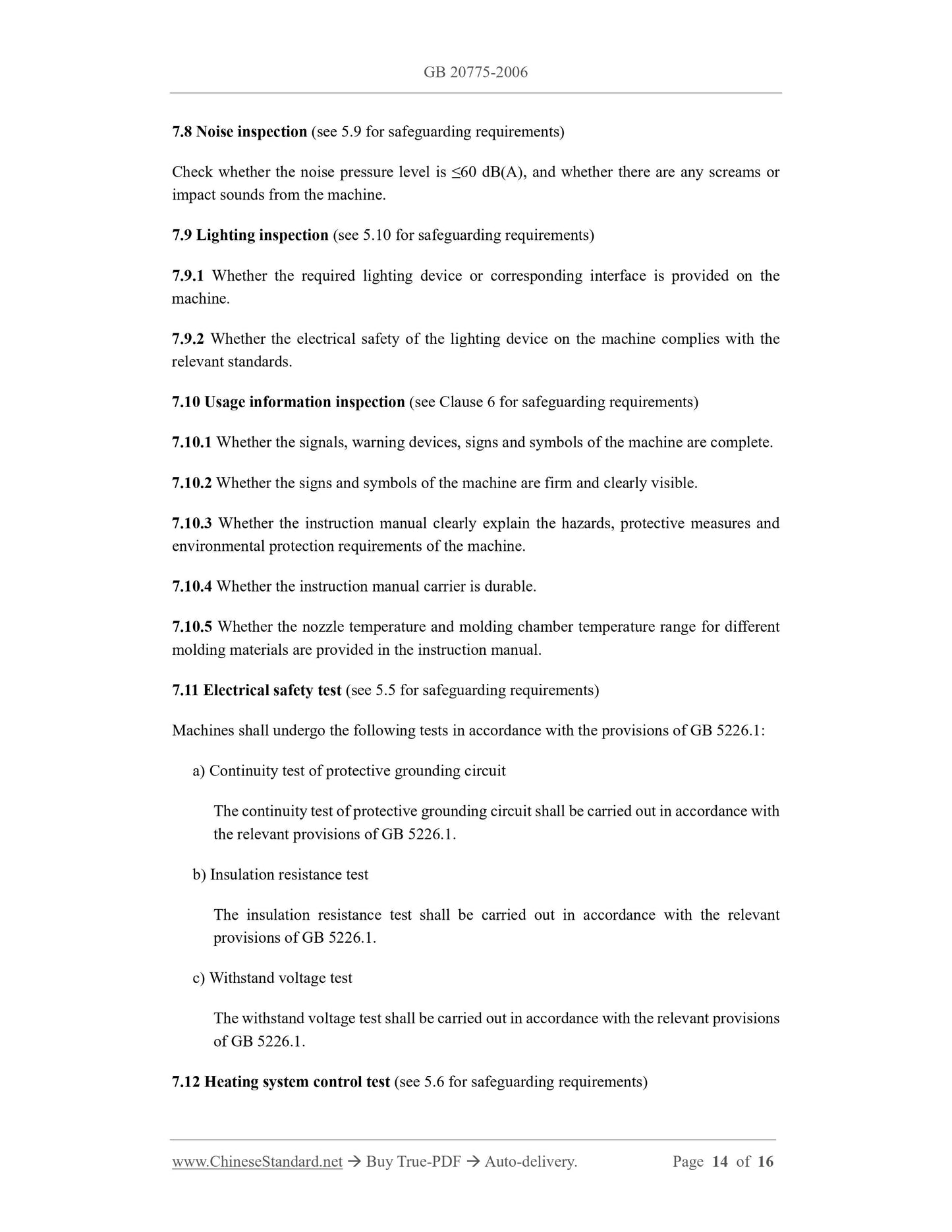1
/
of
9
www.ChineseStandard.us -- Field Test Asia Pte. Ltd.
GB 20775-2006 English PDF
GB 20775-2006 English PDF
Regular price
$250.00
Regular price
Sale price
$250.00
Unit price
/
per
Shipping calculated at checkout.
Couldn't load pickup availability
GB 20775-2006: Fused Deposition Modeling machines - Technical requirements for safeguarding
Delivery: 9 seconds. Download (and Email) true-PDF + Invoice.Get Quotation: Click GB 20775-2006 (Self-service in 1-minute)
Newer / historical versions: GB 20775-2006
Preview True-PDF
Scope
This Standard specifies the safeguarding requirements, measures, usage information and othertechnical requirements for safeguarding of fused deposition modeling machines; and also
stipulates the inspection requirements for safeguarding requirements.
This Standard applies to fused deposition modeling machines (hereinafter referred to as
"machines").
Basic Data
| Standard ID | GB 20775-2006 (GB20775-2006) |
| Description (Translated English) | Fused Deposition Modeling machines - Technical requirements for safeguarding |
| Sector / Industry | National Standard |
| Classification of Chinese Standard | J59 |
| Classification of International Standard | 25.080.99 |
| Word Count Estimation | 10,110 |
| Date of Issue | 2006-12-28 |
| Date of Implementation | 2007-07-01 |
| Quoted Standard | GB 2894-1996; GB 5226.1-2002; GB/T 14896.7-2004; GB/T 15706.1-1995; GB/T 15706.2-1995; GB/T 16769-1997; GB/T 18569.1-2001; GB/T 18569.2-2001 |
| Regulation (derived from) | Announcement of Newly Approved National Standards No. 13 of 2006 (No. 100 overall) |
| Issuing agency(ies) | General Administration of Quality Supervision, Inspection and Quarantine of the People's Republic of China, Standardization Administration of the People's Republic of China |
| Summary | This Chinese standard specifies the fused deposition rapid prototyping machine safety requirements and measures and the use of information technology and other security requirements, security requirements and provides inspection requirements. This standard applies to fused deposition rapid prototyping machine. |
Share
